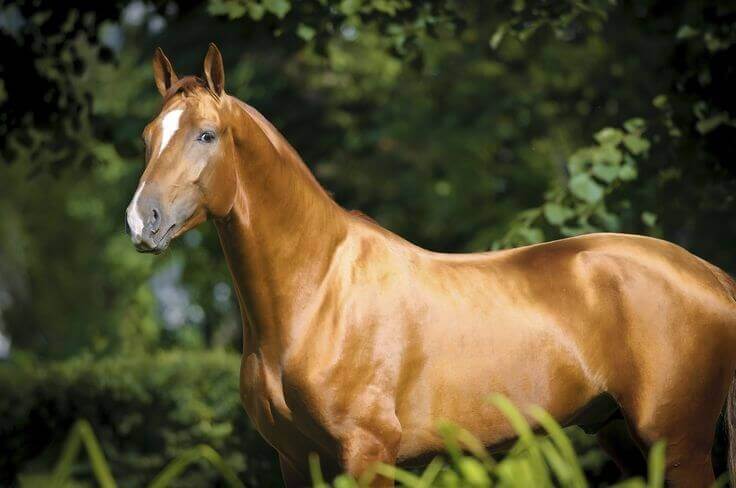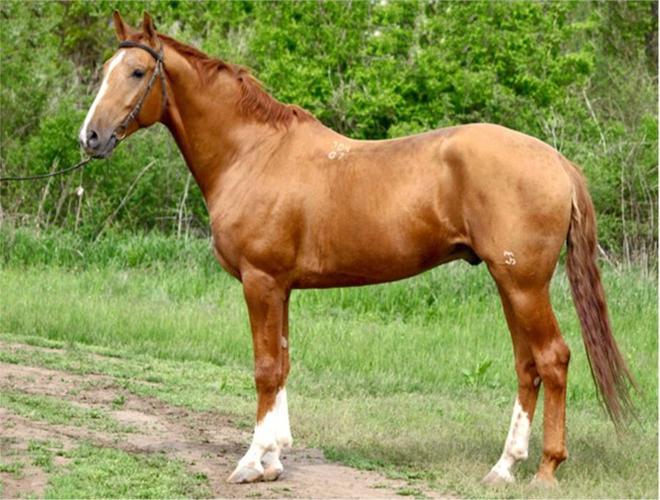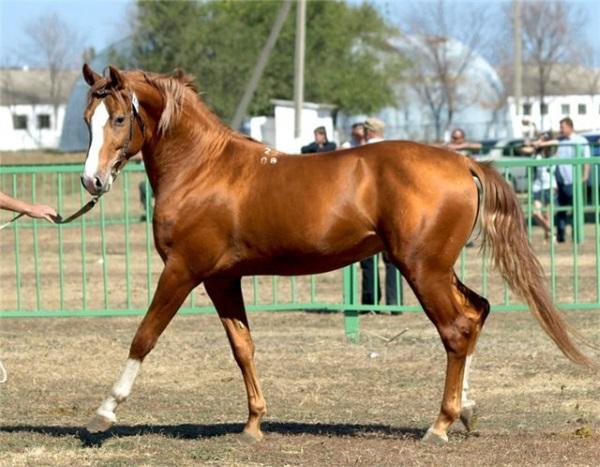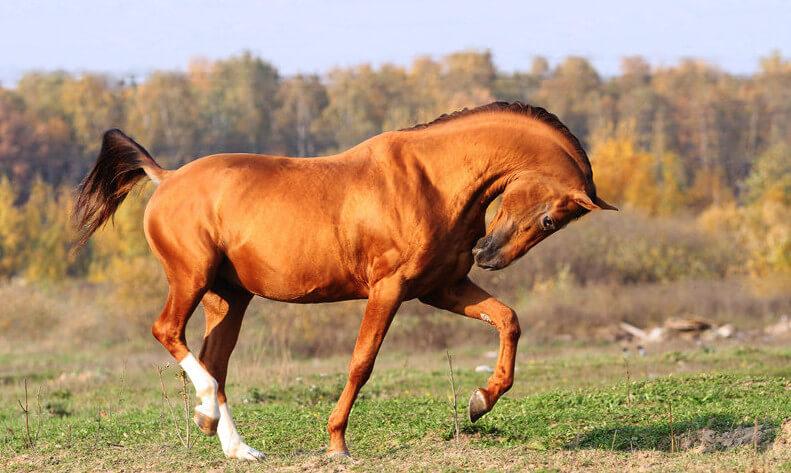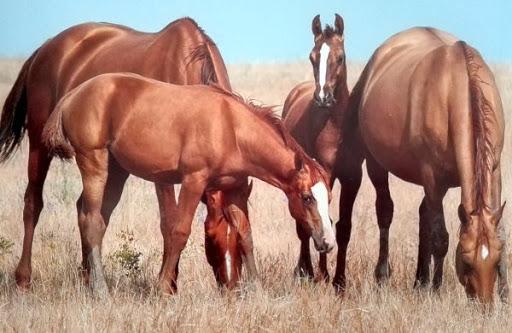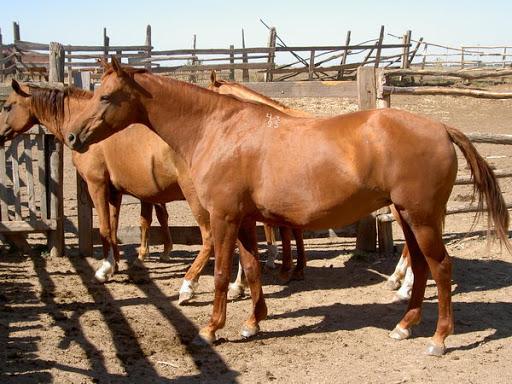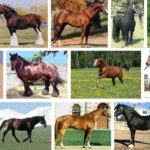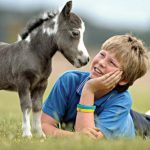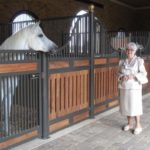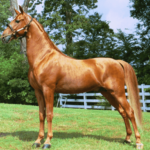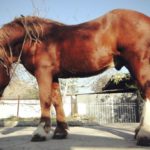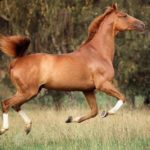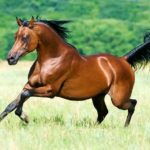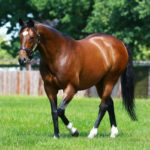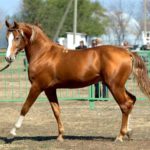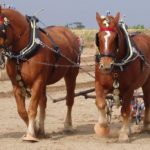The hardy Don horse breed, suitable for any use, is called the “living gold” of the Russian steppe. An unpretentious, stately horse with a golden tint of fur is suitable for both saddle and harness. Representatives of the Russian breed can often be seen at international exhibitions. Today, Donchak dogs are rare, which increases their value; they are bred by stud farms only in Russia.
History of the Don breed of horses
The ancestors of the Don beauties were short and strong Nogai horses that lived in the steppes. From them the Donetsk dogs received red fur that shimmers beautifully in the sun. Breeding of Don horses began in the 17th century in the Rostov province of the Russian Empire. The noble animals got their name from the Don River flowing through this territory. The Cossacks crossed trophy Turkmen, Karabakh, and Persian horses with Nogai horses.
Since the 18th century, Russian landowners began to breed Donchak for army cavalry:
- Platov M. I.;
- General Ilovaisky V.D.;
- Yanov P. P.;
- Serikov I. M.
After the war of 1812, the Don breed, which showed itself excellently in cavalry battles, was recognized as a Russian heritage. The first stud farm for breeding Don horses opened in 1826. By the end of the 19th century, the Donchak became the most common horse on the territory of the Russian Empire; about 20 thousand individuals were kept at Rostov stud farms, not counting the 15 thousand that were in the personal possession of the Cossacks.
The recent wars - World War I and Civil War - significantly reduced the number of Don horses. To save the breed, Semyon Mikhailovich Budyonny gave the order to collect all the Donetsk dogs throughout the country and send them to stud farms for breeding. The number of individuals was normalized within 10 years. The breed became the second largest after the Oryol trotters.
In the 1950s, stud farms opened in the Rostov region, Bashkiria, Kazakhstan, and Kyrgyzstan. The collapse of the Union turned out to be a test that the breed could not withstand. There are only two stud farms left - Zimovnikovsky, in the Rostov region, and Budyonny, in Salsk. In 2010, the Zimovnikovsky stud farm ceased to exist. Today there are almost no Don horses left. The number of breeding Don mares throughout Russia does not exceed 200 individuals.They give birth to about 50 foals every year. The cost of a thoroughbred horse exceeds 500 thousand rubles.
Description and characteristics
Donchak is one of the leaders among horse breeds in terms of endurance. These are strong horses with good immunity. They are sensitive to human kindness, quickly become attached to the person who cares about them, behave with dignity, and are not capricious.
Exterior
Donetsk people have a beautiful, strong, muscular body and a harmonious figure.
Characteristics of the appearance of Don horses:
- high withers – 150-172 cm;
- medium-sized head, wide forehead, short nape;
- auricles of standard size, movable, pointed at the end;
- the eyes are large, beautiful almond-shaped, the gaze is deep, piercing;
- the neck is long, gracefully arched, lean;
- the body is elongated, strong, stocky, the chest is wide, the croup curves smoothly;
- the legs are long, sinewy, with strong joints, the hooves are wide, with good support;
- the hairs on the mane and tail are soft, of medium length, but create a dense hair mass, their color is slightly darker than the main color;
- the weight of an adult is up to 400 kg.
Among the exterior disadvantages of Don horses, breeders note a weak back and a saber-like arrangement of the joints of the hind legs, which makes it difficult to perform some gaits.
Breed types
Modern Donchak people are divided into four types:
- Horse riding. They have a lighter body structure, their legs are longer, the front shoulder blades are sloping, and their croup is massive. The color is red.
- Persian. Tall, slender horses with a developed chest and correct positioning of strong legs. The head is narrow, more elongated. The color is light red.
- Eastern heavy Donchak. Tall and massive horses are about 172 cm tall, chest girth is up to 200 cm.The color is dominated by dark shades of red.
- Karabakh. Medium-sized horses with a flat back and developed loin. The color is dominated by chestnut shades; many individuals have white “socks” on their legs.
Productive qualities
Donchak people have a calm disposition. They are easy to train. Donchak people do not like to idle; to feel good, they need to be busy regularly, otherwise their character will deteriorate and become uncontrollable. High load is not a problem for Don horses. Thanks to physical strength, endurance, strong muscles, harmonious physique, lightning-fast reaction and calm attitude towards people around them, the Don horse breed is considered universal, suitable for any work and sports competitions.
Characteristics
Calm, flexible, friendly Donetsk dogs quickly find contact with people. If the owner takes good care of them, properly looks after them, shows affection and love, then they become his devoted friends for life and obey him unquestioningly. Donchak recognizes one owner and always remembers him, no matter how life circumstances turn out. The attitude towards strangers can be wary and suspicious, but the manifestation of open aggression is uncharacteristic for Donchak people.
Advantages and disadvantages
Each horse breed has advantages and disadvantages. Donetsk advantages:
- courage and endurance;
- high intelligence and learning ability;
- versatility of application;
- devotion to the owner.
Breed disadvantages of Don horses:
- moderate running speed, which is not suitable for racing;
- the need for constant physical activity;
- problems with maneuvering;
- small viewing angle due to the shortened back of the head;
- a devoted and trusting attitude towards only one person - the owner, so the horse is not suitable for pleasure riding or learning to ride.
How to keep the Don breed
When arranging a stable and stall for a Donchak, the following requirements are observed:
- ceiling height – at least 3 m;
- stall – 4×4.5 m;
- doorway width – 1.2 m;
- thickness of partitions – from 4 cm;
- height of solid floors – 1.5 m;
- the width of the space between the ribs of the lattice partitions is 5 cm;
- the floor is wooden or concrete, in the stall at a slope so that waste liquid does not accumulate.
The floor is lined with sand, dry peat, straw or sawdust. Air humidity in the room is 70%, temperature is from +10 to +15 °C. Drafts are not allowed.
The bedding is replaced daily. The stables are cleaned weekly, equipment, walls and partitions are disinfected monthly, and the animal is taken out before this.
Equipment needed to care for a horse:
- hoof hook;
- soft and hard brushes;
- electric haircutting device;
- towels and sponges.
The Don horse is combed daily. In the morning, clean the nostrils and wipe the teardrops of the eyes with a moistened sponge. Before walks, the horse is brushed, and after walks, the legs are washed. To prevent sprains, the legs are wrapped in elastic bandages.
Diet
The daily amount of food for the Don Chak is 2-3% of body weight. The daily portion is increased for:
- pregnant (in the last months) and lactating mares;
- growing foals;
- sick individuals;
- during the winter months for all horses.
An adult horse drinks approximately 60 liters of fluid per day, so access to water should always be available. Percentage feed distribution:
- 50% plant fiber – fresh grass and hay;
- the remaining 50% is grain and bran feed, vegetables, vitamin supplements and treats.
It is forbidden to give the Donetsk wilted grass, it will cause colic.
In the donkey's stomach, food is digested slowly, so feeding can take up to 2 hours. Adult Don horses are fed 3 times a day. Newborn foals suckle from their mother for 5-10 minutes every 30-40 minutes. The lactation period lasts 6-10 months. But already at the age of one month the foal tries solid food.
Breeding specifics
The best producers are individuals from the Budyonny stud farm in Salsk. Representatives of the breed applying for breeding are given a rating on a 10-point scale. Don stallions with a score of at least 8 points and mares with a score of at least 7 points are allowed to breed. Due to the small number of livestock, even frozen semen of deceased purebred Don stallions that received high scores is used for breeding.
Individuals who have reached 3 years of age participate in reproduction. To prevent the mating process from ending in injury, manual mating is used: the Don mare is held by the halter or tied to a post. A born foal is considered a Donchak if the number of breed genes in it is at least 5 out of 16.
Treatment of diseases
Poor quality and stale food causes painful stomach cramps. Dirty food can cause constipation, flatulence and even volvulus. All these pathologies can result in the death of the animal. Don horses are prone to colds. Therefore, they should not be given cold water, left in a draft or in a room where the temperature is below +10 °C. The litter must always be dry.
If the stable does not comply with sanitary rules, the horse may contract a bacterial or parasitic infection and develop dermatitis. The sick animal is isolated and the quarantine is lifted after recovery. Only a veterinarian should treat horses.
Scope of use of horses
A calm disposition, affection for people, a strong and wiry physique, endurance and learning ability - these qualities of the Donchak allow them to be used in:
- equestrian sports competitions (jumping, eventing, dressage) and exhibition performances;
- hunting;
- agricultural work;
- transportation of goods along difficult routes.
The Don breed was bred for military needs, and now the horses are used in mounted police. Donchak people behave calmly in a noisy urban environment, do not feel discomfort, and quickly move along narrow streets while chasing a criminal. That's why the police love them.


